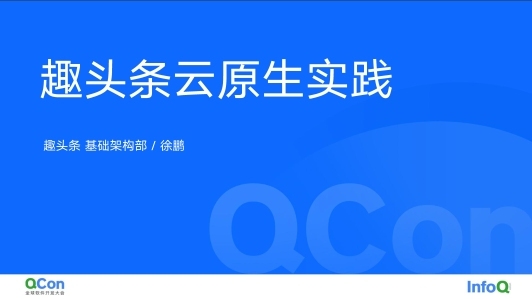问题
我们经常需要在主线程中读取一些配置文件或者缓存数据,最常用的结构化存储数据的方式就是将对象序列化为 JSON 字符串保存起来,这种方式特别简单而且可以和 SharedPrefrence 配合使用,因此应用广泛。但是目前用到的 Gson 在序列化 JSON 时很慢,在读取解析这些必要的配置文件时性能不佳,导致卡顿启动速度减慢等问题。
Gson 的问题在哪里呢?笔者用 AndroidStudio 的 profile 工具分析了activity.onCreate方法的耗时情况。
图 1
图 2
如图 1 所示,可以发现 Gson 序列化占用了大部分的执行时间,从图 2 可以更直观地看到 Gson.fromJson 占用了 61%的执行时间。分析 Gson 的源码可以发现,它在序列化时大量使用了反射,每一个 field,每一个 get、set 都需要用反射,由此带来了性能问题。
如何优化
知道了性能的瓶颈之后,我们如何去修改呢?我能想到的方法就是尽量减少反射。
Android 框架中由 JSONObject 来提供轻量级的 JSON 序列化工具,所以我选择用 Android 框架中的 JSONObject 来做序列化,然后手动复制到 bean 就可以去掉所有的反射。
我做了个简单的测试,分别用 Gson 和 JSONObject 的方式去序列化一个 bean,看下各自速度如何。
使用 JSONObject 的实现方式如下:
public class Bean {
public String key; public String title; public String[] values; public String defaultValue;
public static Bean fromJsonString(String json) { try { JSONObject jsonObject = new JSONObject(json); Bean bean = new Bean(); bean.key = jsonObject.optString("key"); bean.title = jsonObject.optString("title"); JSONArray jsonArray = jsonObject.optJSONArray("values"); if (jsonArray != null && jsonArray.length() > 0) { int len = jsonArray.length(); bean.values = new String[len]; for (int i=0; i<len; ++i) { bean.values[i] = jsonArray.getString(i); } } bean.defaultValue = jsonObject.optString("defaultValue");
return bean; } catch (JSONException e) { e.printStackTrace(); }
return null; }
public static String toJsonString(Bean bean) { if (bean == null) { return null; } JSONObject jsonObject = new JSONObject(); try { jsonObject.put("key", bean.key); jsonObject.put("title", bean.title); if (bean.values != null) { JSONArray array = new JSONArray(); for (String str:bean.values) { array.put(str); } jsonObject.put("values", array); } jsonObject.put("defaultValue", bean.defaultValue); } catch (JSONException e) { e.printStackTrace(); }
return jsonObject.toString(); }}
复制代码
测试代码:
private void test() { String a = "{\"key\":\"123\", \"title\":\"asd\", \"values\":[\"a\", \"b\", \"c\", \"d\"], \"defaultValue\":\"a\"}";
Gson Gson = new Gson(); Bean testBean = Gson.fromJson(a, new TypeToken<Bean>(){}.getType());
long now = System.currentTimeMillis(); for (int i=0; i<1000; ++i) { Gson.fromJson(a, new TypeToken<Bean>(){}.getType()); } Log.d("time", "Gson parse use time="+(System.currentTimeMillis() - now));
now = System.currentTimeMillis(); for (int i=0; i<1000; ++i) { Bean.fromJsonString(a); } Log.d("time", "jsonobject parse use time="+(System.currentTimeMillis() - now));
now = System.currentTimeMillis(); for (int i=0; i<1000; ++i) { Gson.toJson(testBean); } Log.d("time", "Gson tojson use time="+(System.currentTimeMillis() - now));
now = System.currentTimeMillis(); for (int i=0; i<1000; ++i) { Bean.toJsonString(testBean); } Log.d("time", "jsonobject tojson use time="+(System.currentTimeMillis() - now));}
复制代码
测试结果
| 序列化方法 | Gson | JSONObject |
|---|
| 序列化耗时(ms) | 56 | 9 |
| 反序列化耗时(ms) | 97 | 7 |
执行 1000 次 JSONObject,花费的时间是 Gson 的几十分之一。
工具
虽然 JSONObject 能够解决我们的问题,但在项目中有大量的存量代码都使用了 Gson 序列化,一处处去修改既耗费时间又容易出错,也不方便增加减少字段。
那么有没有一种方式在使用时和 Gson 一样简单且性能又特别好呢?
我们调研了 Java 的 AnnotationProcessor(注解处理器),它能够在编译前对源码做处理。我们可以通过使用 AnnotationProcessor 为带有特定注解的 bean 自动生成相应的序列化和反序列化实现,用户只需要调用这些方法来完成序列化工作。
我们继承“AbstractProcessor”,在处理方法中找到有 JsonType 注解的 bean 来处理,代码如下:
@Overridepublic boolean process(Set<? extends TypeElement> set, RoundEnvironment roundEnvironment) { Set<? extends Element> elements = roundEnvironment.getElementsAnnotatedWith(JsonType.class); for (Element element : elements) { if (element instanceof TypeElement) { processTypeElement((TypeElement) element); } } return false;}
复制代码
然后生成对应的序列化方法,关键代码如下:
JavaFileObject sourceFile = processingEnv.getFiler().createSourceFile(fullClassName);ClassModel classModel = new ClassModel().setModifier("public final").setClassName(simpleClassName);......JavaFile javaFile = new JavaFile();javaFile.setPackageModel(new PackageModel().setPackageName(packageName)) .setImportModel(new ImportModel() .addImport(elementClassName) .addImport("com.meituan.android.MSON.IJsonObject") .addImport("com.meituan.android.MSON.IJsonArray") .addImport("com.meituan.android.MSON.exceptions.JsonParseException") .addImports(extension.getImportList()) ).setClassModel(classModel);
List<? extends Element> enclosedElements = element.getEnclosedElements();for (Element e : enclosedElements) { if (e.getKind() == ElementKind.FIELD) { processFieldElement(e, extension, toJsonMethodBlock, fromJsonMethodBlock); }}try (Writer writer = sourceFile.openWriter()) { writer.write(javaFile.toSourceString()); writer.flush(); writer.close();}
复制代码
为了今后接入别的字符串和 JSONObject 的转换工具,我们封装了 IJSONObject 和 IJsonArray,这样可以接入更高效的 JSON 解析和格式化工具。
继续优化
继续深入测试发现,当 JSON 数据量比较大时用 JSONObject 处理会比较慢,究其原因是 JSONObject 会一次性将字符串读进来解析成一个 map,这样会有比较大的内存浪费和频繁内存创建。经过调研 Gson 内部的实现细节,发现 Gson 底层有流式的解析器而且可以按需解析,可以做到匹配上的字段才去解析。根据这个发现我们将我们 IJSONObject 和 IJsonArray 换成了 Gson 底层的流解析来进一步优化我们的速度。
代码如下:
Friend object = new Friend();reader.beginObject();while (reader.hasNext()) { String field = reader.nextName(); if ("id".equals(field)) { object.id = reader.nextInt(); } else if ("name".equals(field)) { if (reader.peek() == JsonToken.NULL) { reader.nextNull(); object.name = null; } else { object.name = reader.nextString(); } } else { reader.skipValue(); }}reader.endObject();
复制代码
代码中可以看到,Gson 流解析过程中我们对于不认识的字段直接调用 skipValue 来节省不必要的时间浪费,而且是一个 token 接一个 token 读文本流这样内存中不会存一个大的 JSON 字符串。
兼容性
兼容性主要体现在能支持的数据类型上,目前 MSON 支持了基础数据类型,包装类型、枚举、数组、List、Set、Map、SparseArray 以及各种嵌套类型(比如:Map<String, Map<String, List<String[]>>>)。
性能及兼容性对比
我们使用一个比较复杂的 bean(包含了各种数据类型、嵌套类型)分别测试了 Gson、fastjson 和 MSON 的兼容性和性能。
测试用例如下:
@JsonTypepublic class Bean { public Day day; public List<Day> days; public Day[] days1; @JsonField("filed_a") public byte a; public char b; public short c; public int d; public long e; public float f; public double g; public boolean h;
@JsonField("filed_a1") public byte[] a1; public char[] b1; public short[] c1; public int[] d1; public long[] e1; public float[] f1; public double[] g1; public boolean[] h1;
public Byte a2; public Character b2; public Short c2; public Integer d2; public Long e2; public Float f2; public Double g2; public Boolean h2; @JsonField("name") public String i2;
public Byte[] a3; public Character[] b3; public Short[] c3; public Integer[] d3; public Long[] e3; public Float[] f3; public Double[] g3; public Boolean[] h3; public String[] i3;
@JsonIgnore public String i4; public transient String i5; public static String i6;
public List<String> k; public List<Integer> k1; public Collection<Integer> k2; public ArrayList<Integer> k3; public Set<Integer> k4; public HashSet<Integer> k5; // fastjson 序列化会崩溃所以忽略掉了,下同 @com.alibaba.fastjson.annotation.JSONField(serialize = false, deserialize = false) public List<int[]> k6; public List<String[]> k7; @com.alibaba.fastjson.annotation.JSONField(serialize = false, deserialize = false) public List<List<Integer>> k8;
@JsonIgnore public List<Map<String, Integer>> k9; @JsonIgnore public Map<String, String> l; public Map<String, List<Integer>> l1; public Map<Long, List<Integer>> l2; public Map<Map<String, String>, String> l3; public Map<String, Map<String, List<String>>> l4;
@com.alibaba.fastjson.annotation.JSONField(serialize = false, deserialize = false) public SparseArray<SimpleBean2> m1; @com.alibaba.fastjson.annotation.JSONField(serialize = false, deserialize = false) public SparseIntArray m2; @com.alibaba.fastjson.annotation.JSONField(serialize = false, deserialize = false) public SparseLongArray m3; @com.alibaba.fastjson.annotation.JSONField(serialize = false, deserialize = false) public SparseBooleanArray m4;
public SimpleBean2 bean; @com.alibaba.fastjson.annotation.JSONField(serialize = false, deserialize = false) public SimpleBean2[] bean1; @com.alibaba.fastjson.annotation.JSONField(serialize = false, deserialize = false) public List<SimpleBean2> bean2; @com.alibaba.fastjson.annotation.JSONField(serialize = false, deserialize = false) public Set<SimpleBean2> bean3; @com.alibaba.fastjson.annotation.JSONField(serialize = false, deserialize = false) public List<SimpleBean2[]> bean4; @com.alibaba.fastjson.annotation.JSONField(serialize = false, deserialize = false) public Map<String, SimpleBean2> bean5;
复制代码
测试发现:
Gson 的兼容性最好,能兼容几乎所有的类型,MSON 其次,fastjson 对嵌套类型支持比较弱。
性能方面 MSON 最好,Gson 和 fastjson 相当。
测试结果如下:
| 序列化方法 | MSON | Gson | fastjson |
|---|
| 序列化耗时(ms) | 20 | 47 | 55 |
| 反序列化耗时(ms) | 1 | 20 | 43 |
方法数
MSON 本身方法数很少只有 60 个,在使用时会对每一个标注了 JsonType 的 Bean 生成 2 个方法,分别是:
public String toJson(Bean bean) {...} // 1public Bean fromJson(String data) {...} // 2
复制代码
另外 MSON 不需要对任何类做 keep 处理。
MSON 使用方法
下面介绍 MSON 的使用方法,流程特别简单:
1. 在 Bean 上加注解
@JsonTypepublic class Bean { public String name; public int age; @JsonField("_desc") public String description; //使用JsonField 标注字段在json中的key public transient boolean state; //使用transient 不会被序列化 @JsonIgnore public int state2; //使用JsonIgnore注解 不会被序列化 }
复制代码
2. 在需要序列化的地方
MSON.fromJson(json, clazz); // 反序列化MSON.toJson(bean); // 序列化
复制代码
总结
本文介绍了一种高性能的 JSON 序列化工具 MSON,以及它的产生原因和实现原理。目前我们已经有好多性能要求比较高的地方在使用,可以大幅的降低 JSON 的序列化时间。


















评论